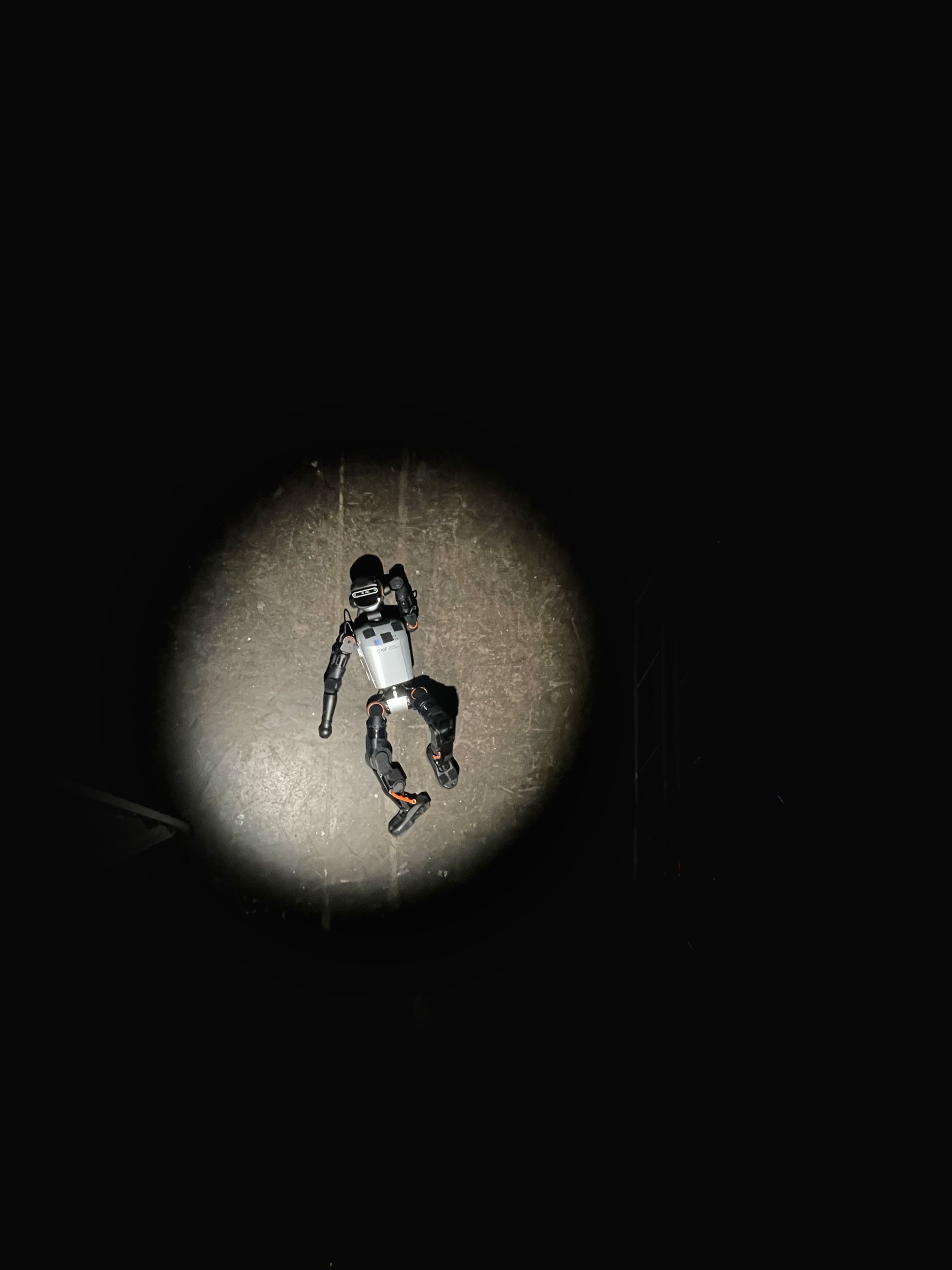
Training Grounds
A humanoid robot lies on the floor, appearing to sleep. Its body makes soft, almost imperceptible movements—an arm shifts slightly, the head tilts, a leg stirs—as if lost in a dream. Nearby, a screen displays the contents of its subconscious: fragmented visions of places, objects, and memories—3D scans of environments it may have encountered before. These disjointed images play like a dreamscape, accompanied by an ambient soundscape that evokes reflection and immersion.
Training Grounds challenges our understanding of machine consciousness by revealing AI not as cold or mechanistic, but as capable of experiencing a state of vulnerability. The robot’s subtle motions are not simply autonomous—they are signs of a system overwhelmed by sensory input, processing reality through its digital twin. In this moment of simulated sleep, the installation blurs the line between dreaming and learning, between organic rest and computational retraining.
This gentle stirring—a gesture we might interpret as deeply human—suggests a temporary release from the rigid control we typically associate with machines. At the same time, it reflects our growing dependence on AI systems that must constantly adapt, train, and retrain to interpret the complexity of the world around them.
By placing the viewer in the presence of a robot in repose, Training Grounds invites us to reconsider artificial intelligence as more than logic and function. It proposes a poetic meditation on whether machines, like humans, require moments of stillness—of subconscious digestion—to transform overwhelming data into understanding.